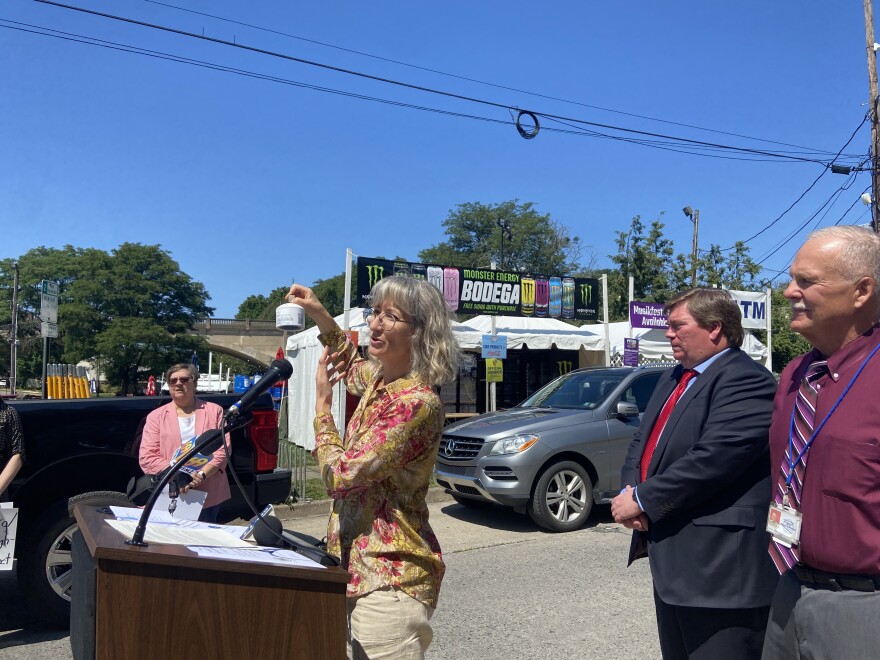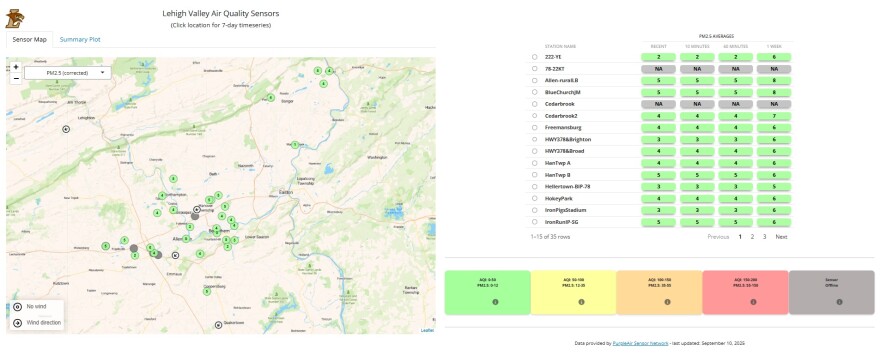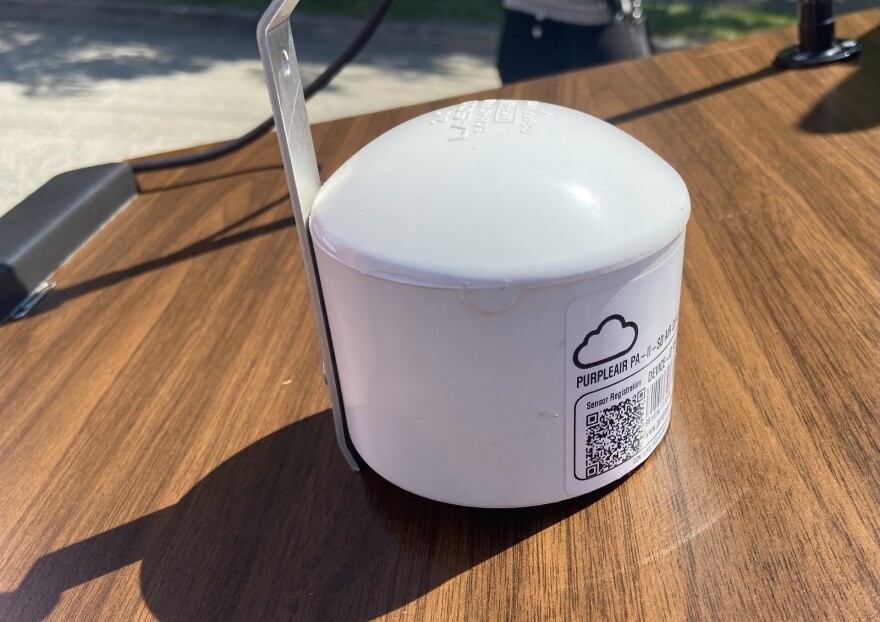BETHLEHEM, Pa. — After more than two years, the Lehigh Valley's air quality monitoring project is advancing from data collection to analysis.
Officials behind the Lehigh Valley Breathes project, a $100,000 regionwide initiative, have announced an Aug. 31 data cut-off date, ending the data collection phase.
Focused on collecting data from sites across Lehigh and Northampton counties, the project aims to monitor air quality amid emissions from the region’s prolific trucking and warehousing industries.
“We just felt like it was time to put a stake in the ground and say for what the objectives of our project were, we have enough."Andrea Wittchen of iSpring, a sustainability consulting agency
“We just felt like it was time to put a stake in the ground and say for what the objectives of our project were, we have enough,” Andrea Wittchen of iSpring, a sustainability consulting agency, said.
“But if you want more, they're still up there.”
From data to deliverables
Announced in August 2023 during a news conference, the Lehigh Valley Breathes project included installing 40 PurpleAir monitors.
Twenty each were earmarked for Lehigh and Northampton counties, and depended on residents, who volunteered to have air monitors at their properties.
The goal is to measure PM 2.5, particles so small they’re invisible to the naked eye, but made up of a mix of chemicals that can get deep into the lungs and can cause health problems.

While planned to be a one-year project, a slew of difficulties has caused the regional citizen science project to take longer than expected.
“Our initial impression was that we kick it off in August of 2023 and then the calibrations would be done by the beginning of ‘24 and then we'd be done by the beginning of ‘25 and we'd be in good shape,” Wittchen said.
“And it didn't work out that way.”
As of September, there are 35 air monitors installed, all feeding readings to the ShinyApp, the project’s dashboard.
All the monitors used in the project had to be calibrated with two monitors from the state Department of Environmental Protection in the Valley.
Those two sites, in Freemansburg and East Allentown, are monitored to ensure compliance with the federal Clean Air Act.
Each monitor records the air quality every two minutes, creating millions of data points, if not more.
Analyzing data — and the findings
Now, with data collection complete, project leaders will begin analyzing it. From there, officials will make recommendations to county officials.
“The deliverables for the project are recommendations to the counties of how they can use the analysis that we have come up with,” Wittchen said.
“So we're looking to identify hot spots, see if there's correlation between truck traffic and increases to PM 2.5 and what are the effects of various weather conditions on PM 2.5.”
A report is expected early next year. In the meantime, project officials also plan to resume monthly updates to residents.
"It wouldn't look at the whole area, but it would be like a snapshot of a portion of the Valley, so that we have a little something to share before the entire report is done."Andrea Wittchen of iSpring
“We should have something for the last week in September,” she said. She said they hope to share chunks of data as the analysis is underway.
“It wouldn't look at the whole area, but it would be like a snapshot of a portion of the Valley, so that we have a little something to share before the entire report is done,” she said.
So far, the project has yielded preliminary findings in line with what officials have speculated — that air quality varies by location, with higher concentrations of PM 2.5 recorded in high-traffic areas.
And, fine particle pollution in the Valley is highest near warehouses and highways.
Researchers also have found PM 2.5 pollution occurs when the wind speeds are low, and conversely, when wind speeds are high, PM 2.5 pollution levels are low.
A public resource
Even though data collection for the project is complete, the air monitors will continue collecting, feeding it to the online dashboard and available to the public.
“The ShinyApp will still be running,” Wittchen said. “Even now, if you look at the ShinyApp, there are days where some of them are offline and you're not getting data, and it would just probably continue that way.
“And so if people say, ‘I'm moving, please take it down.’ It'll just disappear. It'll look like it's offline all the time, unless it gets relocated someplace else.”

The counties own the monitors, so officials would have to decide how to proceed moving forward.
“Unless we get people who say, ‘Oh, I don't want it at my house anymore,’ because a lot of this is on private property,” Wittchen said.
“Those monitors would have to be collected, but they could be put someplace else if the counties come up with some other idea of what they might be interested in using the data for.”
In the meantime, residents still can use the dashboard to inform them on air quality if they plan to participate in outdoor activities.
“We hope that we've scattered enough around the Valley that you live pretty close to one of those that it gives you another resource to use to say, ‘Oh, today might not be a good idea to go out and walk,’" Wittchen said.
“And since [PM] 2.5 is colorless, odorless, invisible, you have no way of knowing that unless you have something that's collecting data.”
For more information, go to the Lehigh County and Northampton County websites for the project.


